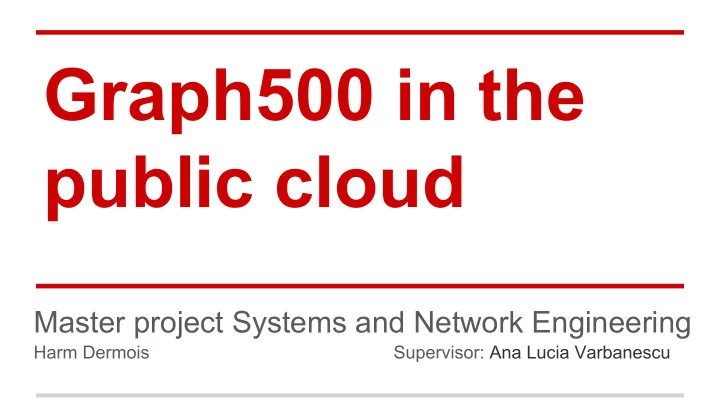

Graph500 in the public cloud Master project Systems and Network Engineering Harm Dermois Supervisor: Ana Lucia Varbanescu
What is Graph 500 ● List of the best top 500 best graph processing machines ● Benchmark tailored to graph processing ● Other metrics
What is Graph 500
What is Graph 500
Getting on the list Input : scale and edge factor Create edge list Make graph (timed) For 64 random search keys do: Breadth First Search (timed) Validate (Skipped) Report time
Edge list generation ● Tuple of start vertex to end vertex and a label ● Uses the scale and edge factor ● Randomize edge list 1 2 3 4 5 6 7 8 9 10 11 12 13 14 A A A B C C D E E E F F F I B C D E F G G H F I I J G K
Graph construction ● Change edge list to other data structure with more locality ● Compressed Row Storage Edge label 1 2 3 4 5 6 7 8 col_index 2 3 4 1 5 1 6 7 row_pointer 1 4 6 9
Breadth First Search
Why run Graph 500 on the cloud? How good is the cloud at graph processing? Advantage: No need to own equipment. Elastic for larger and larger graphs. Disadvantage: Performance might be really bad … … and it is cool to have your name in the list!
Research questions Is it possible to model the performance of the Graph500 benchmark on a public cloud as a function of the used resources? ● What is the performance? ● What scale fits? ● What is the model?
Methodology & Scope One implementation: graph500_mpi_simple Hardware: DAS-4 (With and without InfiniBand) OpenNebula (On the DAS-4) Amazon Webservices EC2 Metric: TEPS BFS performance = number of traversed edges per second (TEPS)
Hardware specifications Where # Nodes Processor CPUs RAM Price DAS-4 VU 46(all) 2.40GHz 2 * 8 24 GB DAS-4 LU 16 2.40GHz 2 * 8 48 GB OpenNebula 8 2.00 GHz 24 (8 VCPU) 66 GB c3.large “Unlimited” 2.80GHz 2 VCPU 4 GB $0.105 per Hour r3.large “Unlimited” 2.40GHz 2 VCPU 16 GB $0.175 per Hour
graph500_mpi_simple Distributes the vertices evenly over the nodes Works top-down, per level Each level => task queue Uses Non blocking communication Limitations ● Needs the number of nodes to be a power of 2 ● Uses only 1 CPU for BFS
Results DAS-4 no InfiniBand ● Tipping points ● More nodes => more TEPS for scales 15 and larger ● TEPS is a linear function of the number of nodes
Results Amazon c3.large ● Same behavior as DAS-4 no InfiniBand at higher scales. ● Scale 15 and lower a different behavior ● Even less of a decline than the DAS-4 at higher scale.
Results Amazon r3.large ● Results almost identical to the c3.large ● Can handle larger scales because it has more RAM
Comparison Amazon and DAS-4 ● 10%-50% difference for large scale and number of nodes
Research questions Is it possible to model the performance of the Graph500 benchmark on a public cloud as a function of the used resources? ● What is the model? ● What is the performance? ● What scale fits?
Conclusion A model can be made: TEPS(scale) = a*#nodes+b, #nodes <= T slow decrease, #nodes > T where Tipping point = T = f(scale, architecture) a,b=f(scale?, architecture) ● Scale 30 is doable with 32 nodes r3.large ● Overall competitive, performance-wise, with the ranks 5- 10 supercomputers.
Future work ● More nodes and larger scales. ● Multiple processes per node. ● Different cloud instances. ● Optimizations.
Prediction* # Nodes 2048 8192 2097152 GTEPS 1.9891 7.9565 2036.8654 Cost per hour $245.76 $983.04 $251,316.48 With 8192 nodes => above the DAS-4. With 2097152 nodes => 6th place can be achieved *Disclaimer: this is just a prediction
Questions?
Hypothesis Performance = max(CPU Time, Comm time) / Traversed edges ● CPU time => function of number of nodes ● Comm time => function of scale, number of nodes, and message buffering
Technical difficulties Does not work properly with MPI 1.4 OpenNebula cloud shutdown the day I started On demand instances limit
Results OpenNebula ● Lines cross more often. ● 8 times less TEPS compared to InfiniBand.
Results DAS-4 with InfiniBand ● After tipping point a harsh decline. ● Scales above 15 double in TEPS as Nodes double.
Intel MPI Benchmark Size (bytes) DAS-4 μsec DAS-4 InfiniBand μsec OpenNebula μsec Amazon μsec 0 3.81 46.55 112.75 81.82 1024 4.93 56.97 130.76 91.40 2048 5.96 68.36 269.74 102.96
Output
Related work Suzumura, Toyotaro, et al. "Performance characteristics of Graph500 on large-scale distributed environment." Workload Characterization (IISWC), 2011 IEEE International Symposium on . IEEE, 2011. Angel, Jordan B., et al. Graph 500 performance on a distributed-memory cluster . Tech. Rep. HPCF–2012–11, UMBC High Performance Computing Facility, University of Maryland, Baltimore County, 2012 .
Edge list and graph creation A B C D E F G H I J A 0 1 1 1 0 0 0 0 0 0 B 1 0 0 0 1 0 0 0 0 0 # of non zeros 1 2 3 4 5 6 7 8 C 1 0 0 0 0 1 1 0 0 0 col_index 2 3 4 1 5 1 6 7 D 1 0 1 1 0 1 0 0 0 0 E 0 1 0 0 0 1 0 1 1 0 row_pointer 1 4 6 9 F 0 0 1 0 1 0 1 0 1 1 G 0 0 0 0 0 0 0 0 0 0 H 0 0 0 0 1 0 0 0 0 0 I 0 0 0 0 1 1 0 0 0 1 J 0 0 0 0 0 1 0 0 1 0
Future work ● More nodes and larger scales. ● Multiple processes per node. ● Further investigate effect of the network on the performance for the DAS-4. ● Different cloud instances. ● Optimizations.
Recommend
More recommend